Do you have a question about the Yard-Man 131704F and is the answer not in the manual?
Read manual, wear protective gear, keep area clear, and avoid hazards.
Stop blades when crossing surfaces, disconnect spark plug wire before adjustments.
Use slope gauge, reduce speed on slopes, and avoid erratic operation.
Remove tractor from carton, identify all loose parts, and prepare for assembly.
Assemble the seat to the pivot bracket and prepare the battery for activation.
Safety precautions for handling battery acid, including protective gear and first aid.
Fill each cell slowly to the upper level mark, allow acid to absorb, then replace caps.
Perform a slow charge after activation, following specific ampere and time guidelines.
Install steering wheel and bellow, securing with washer, hex lock nut, and insert.
Attach the chute deflector to the deck as per separate deck manual instructions.
Set tire pressure to approximately 12 p.s.i., not exceeding 30 p.s.i.
Measure and adjust deck height on both sides for an even cut.
Operate ignition switch, throttle control for speed, and choke for starting.
Understand hydrostatic lever, clutch-brake pedal, and parking brake functions.
Learn about the light switch, ammeter, and PTO switch operation.
Operate relief valve for moving unit and check indicator lights for Model 734G.
Engage PTO switch and operate lift lever for cutting deck height and blade control.
Follow safety interlocks, pedal, throttle, and choke steps to start the engine.
Turn ignition key to OFF and remove; stop immediately if a foreign object is struck.
Set cutting height, start engine, release brake, and use hydrostatic lever for movement.
Perform seat adjustment and hydrostatic control linkage adjustment as needed.
Perform minor carburetor adjustments and lubricate steering gears, shaft, and linkage.
Check transaxle, lubricate linkage pivot points and wheel grease fittings.
Service air cleaner, check spark plug, and maintain engine oil per manual.
Check hydrostatic transmission fluid level and add 10W30 oil if necessary.
Clean spills, accumulated dirt, and the underside of the deck after mowing.
Adjust front wheel toe-in and perform blade removal, sharpening, and reassembly.
Check electrolyte, specific gravity, and charge battery as needed.
Store battery properly in a cold, dry place and use correct jump starting procedure.
Check tire pressure, prepare for deck belt replacement, and drive belt maintenance.
Detailed steps for removing the drive belt on Model 704F.
Detailed steps for removing the drive belt on Model 734G.
Clean, lubricate, drain fuel, and refer to battery storage instructions.
Store unit in a clean, dry area and protect surfaces from rust.
Diagnose battery, fuse, or solenoid issues if the engine will not crank.
Check throttle, choke, spark plug, and ignition system for starting problems.
Address engine smoking, excessive vibration, and poor grass discharge.
Troubleshoot no output torque, no neutral, oil leaks, or noisy operation.
Understand terms, conditions, exclusions, and battery replacement policies.
Learn how to obtain warranty service and the process for part returns.
Use the gauge to identify slopes exceeding 15 degrees where operation is unsafe.
| Brand | Yard-Man |
|---|---|
| Model | 131704F |
| Category | Lawn Mower |
| Language | English |
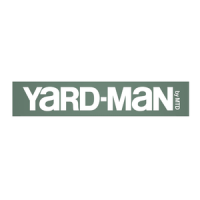
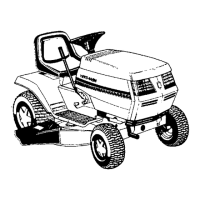



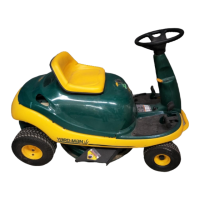

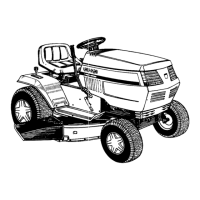



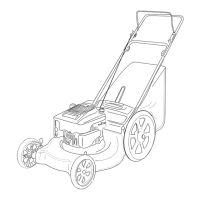
